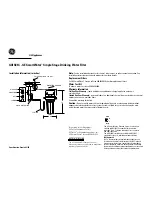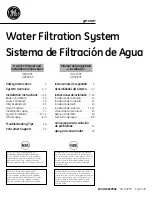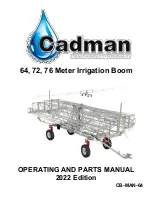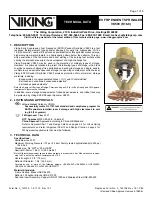
EN
6. Assembly
- 70 -
951-170-218-EN
Version 06
○
The aerosol lines should be routed so
that they are subject to few vibrations.
○
If two or more outputs on an MQL sys-
tem are used simultaneously, the total
cross-section of the inner cooling ducts
on the tools used should be no greater
than 20 mm
2
. To ensure a balanced
supply of lubricant to the tools, the diam-
eters of the inner cooling ducts of the in-
dividual tools must not differ greatly. This
is the only way to achieve relatively equal
distribution of the airflow rate and thus
lubricant quantities for each tool.
○
The aerosol line should rise continu-
ously to the machine. Downward bends
should be avoided where possible, since
lubricant could accumulate in these ar-
eas, for example when the machine is at
standstill.
○
If it is impossible to route the aerosol
lines without any downward bends, the
accumulated lubricant must be blown out
from time to time with the tool removed.
○
Aerosol feeding to spindles or rotating
tools should be in the axial direction.
Radial feeding, especially at high spindle
speeds, can lead to “centrifuging” of the
lubricant, i.e., the aerosol will decom-
pose. This is particularly important for
applications with small and fast-rotating
tools.
○
The outlet of the cooling duct bore on
the tool should not lie only on the tool’s
cutting edge, as is usually the case with
many tools for full spray lubrication. Op-
timal results are not attained when such
tools are used, whereas minimal quantity
lubrication systems can achieve much
better results. Because of the consider-
ably lower operating pressure of minimal
quantity lubrication systems in compari-
son to full spray lubrication, the point
between the tool and the workpiece is
inadequately lubricated. Tools appropri-
ate for MQL must always be used.
○
On an MQL system with bypass control,
the aerosol flow must be divided by a
Y-piece at the end of the aerosol line, as
close as possible to the tool spindle. The
divided aerosol flow must be transported
to the tool via the spindle as well as
either back into a refilling reservoir (de-
signed for this application) or the exhaust
air system via the bypass valve.
The following notes apply to the rotary
leadthroughs and spindles of the machine
tools:
















































